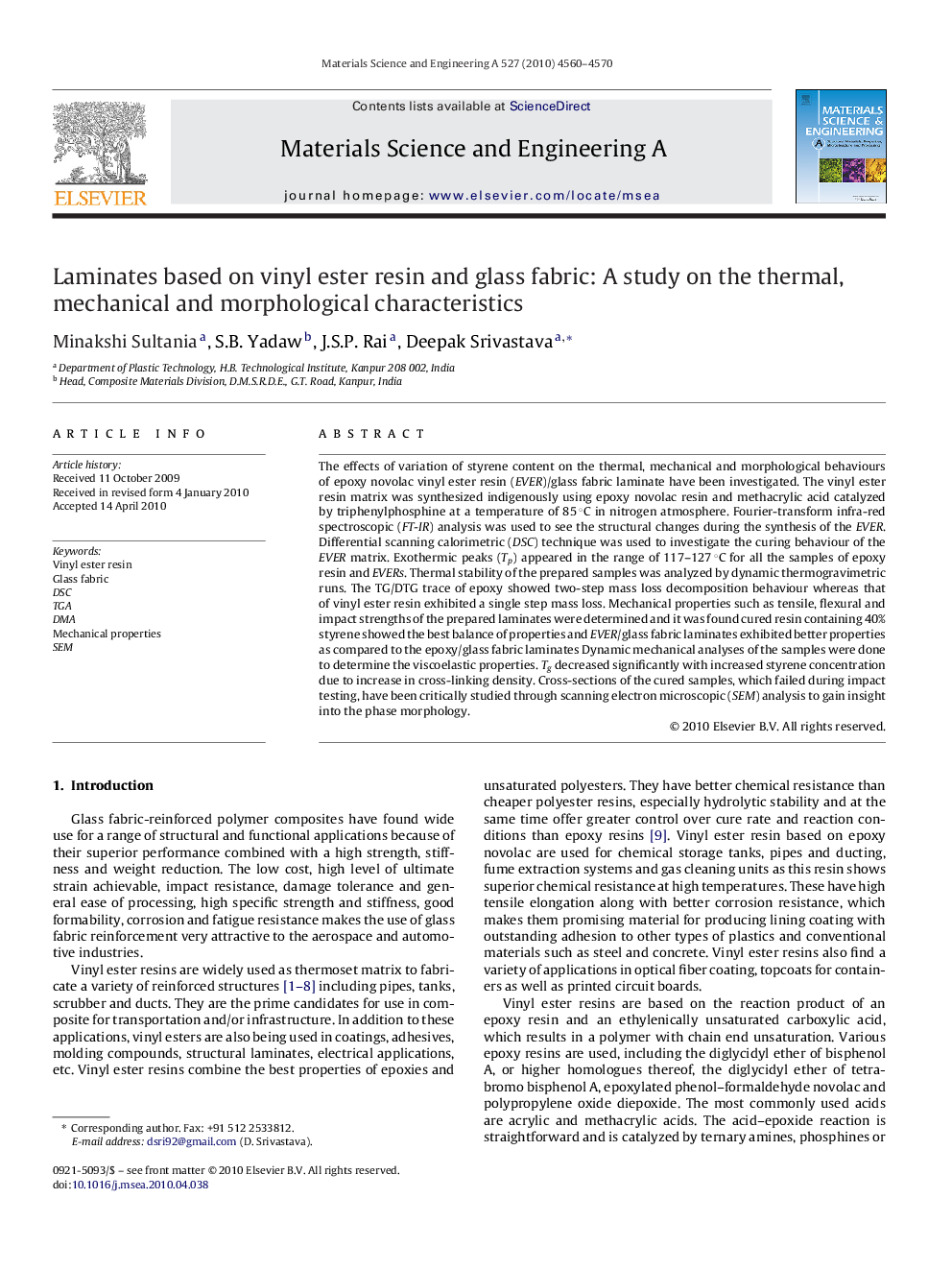| Article ID | Journal | Published Year | Pages | File Type |
|---|---|---|---|---|
| 1579034 | Materials Science and Engineering: A | 2010 | 11 Pages |
Abstract
The effects of variation of styrene content on the thermal, mechanical and morphological behaviours of epoxy novolac vinyl ester resin (EVER)/glass fabric laminate have been investigated. The vinyl ester resin matrix was synthesized indigenously using epoxy novolac resin and methacrylic acid catalyzed by triphenylphosphine at a temperature of 85 °C in nitrogen atmosphere. Fourier-transform infra-red spectroscopic (FT-IR) analysis was used to see the structural changes during the synthesis of the EVER. Differential scanning calorimetric (DSC) technique was used to investigate the curing behaviour of the EVER matrix. Exothermic peaks (Tp) appeared in the range of 117-127 °C for all the samples of epoxy resin and EVERs. Thermal stability of the prepared samples was analyzed by dynamic thermogravimetric runs. The TG/DTG trace of epoxy showed two-step mass loss decomposition behaviour whereas that of vinyl ester resin exhibited a single step mass loss. Mechanical properties such as tensile, flexural and impact strengths of the prepared laminates were determined and it was found cured resin containing 40% styrene showed the best balance of properties and EVER/glass fabric laminates exhibited better properties as compared to the epoxy/glass fabric laminates Dynamic mechanical analyses of the samples were done to determine the viscoelastic properties. Tg decreased significantly with increased styrene concentration due to increase in cross-linking density. Cross-sections of the cured samples, which failed during impact testing, have been critically studied through scanning electron microscopic (SEM) analysis to gain insight into the phase morphology.
Related Topics
Physical Sciences and Engineering
Materials Science
Materials Science (General)
Authors
Minakshi Sultania, S.B. Yadaw, J.S.P. Rai, Deepak Srivastava,
